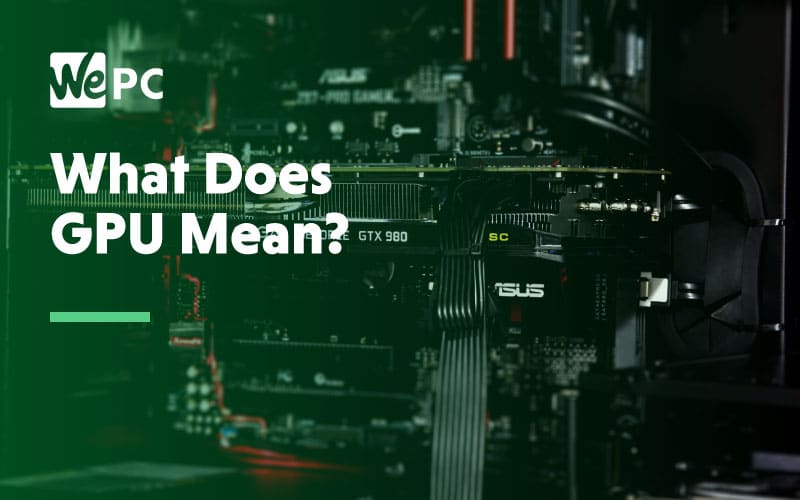If you’re a newcomer to the PC building game, you might be a little flustered at the idea of all the acronyms you see floating around. Every component has seemingly been reduced to a three-letter signature. Luckily, learning the basic component acronyms is fairly simple. Today’s article will be looking at; what does GPU mean? What does a GPU do? And a brief history of GPUs.
So let’s waste no more time and get straight into it.
What Does GPU Mean?
A GPU, or graphics processing unit, is the single-chip processor in your PC that rapidly manipulates and alters memory to accelerate the performance of image and graphics creation. The GPU renders images, videos, and graphics for your computer’s output display. Usually, the GPU is located on plug-in cards, in a chipset on the motherboard, or mounted on the same chip as the CPU. The latter is more commonly known as the APU.
GPUs aren’t unique to desktop PCs, however. We also find graphics processing units in mobile phones, display adapters, workstations, and game consoles. Even though a GPU will change in size and performance across each of the platforms, it’s job still remains the same; to render graphics.
GPU History
The first graphics processing unit was brought to shelves by Nvidia back in 1999 and was named the GeForce 256. This GPU could process 10 million polygons per second and was made up of more than 22 million transistors.
Since then, GPUs have become more popular as the demand for graphic applications has increased. It was only a matter of time before they were considered a necessity. In today’s market, the GPU is one of the most important hardware components that you’ll have to consider. It will dictate how futureproof your build is, and ultimately, what games and tasks it can perform — some of the most sought after GPUs retail for well over $1000 (the 2080 ti, for example).
Features
We have outlined the main features of a GPU below to give you a better idea of what they do:
- 2D and 3D graphics
- Creating a digital output to your display monitor
- Rendering graphics
- Support for YUV color space
- Hardware overlays
- Texture mapping
- MPEG decoding
The above features are all designed to take some of the strain away from your CPU and help produce faster video and graphics.
Final Words
Hopefully, we’ve answered some of the questions you’ve been asking yourself about GPUs. We’ve tried to make the information as easy to understand as possible.
That being said, if you’re looking for a more in-depth article on exactly what GPUs do, then why not leave us a comment below. If there is enough demand, we’ll make it!

